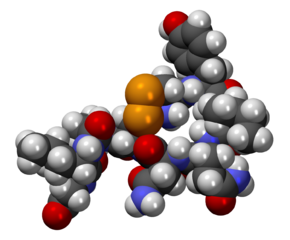 |
| Anterior Cingulate Cortex |
Two primary forms of romantic love have been studied
scientifically; Passionate (face-to-face, ignore-the-world) and Companionate
(side-by-side, face-the-world–together). Passionate love blooms rapidly but fades within 24-36
months. The evolutionary theory behind this is that brain chemistry evolved to
allow male-female attachment to last at least long enough to rear a a single
child together. ** The main hormones involved in love are dopamine, oxytocin (touch hormone), and phenylethylamine (love hormone). High vasopressin levels in male prairie voles keep
them monogamous for life. It hasn’t been substantiated yet whether this is the
case with humans. Phenylethylamine is a potent chemical which is addictive
because it binds to dopamine receptors in the brain. That is why romantic
break-ups result in emotional withdrawal symptoms such as depression, inability
to concentrate, social isolation, and restlessness.
Recent studies using funtional magnetic resonance imaging (fMRI) scans have shown that two areas of
the brain become active when test subjects who self-identified as ‘being in
love” were shown photographs of their beloved. These areas are the anterior
cingulate cortex and the insular cortex (see diagram).
Insular Cortex
Insular Cortex
Insular within the cerebral cortex. Labeled on upper right.
**Robbins, T. W., and B. J. Everitt. 1996. Neurobehavioural
mechanisms of reward and motivation. Current
Opinion in Neurobiology 6:228-68
Sources: Fisher, Helen, Why
We Love: The Nature and Chemistry of Romantic Love, Henry Holt and Company,
New York, 2004
Crenshaw, Theresa L., The
Alchemy of Love and Lust: How Our Sex Hormones Influence Our Relationships,
Pocket Books, New York, 1996
Oxytocin – The touch hormone
Phenylethylamine - The Love Hormone (very addictive, handle with care)
Vasopressin
Chemical structure of the argipressin. The above structure is a compound from the vasopressin family with an arginine at the 8th amino acid position. (wikipedia)












No comments:
Post a Comment